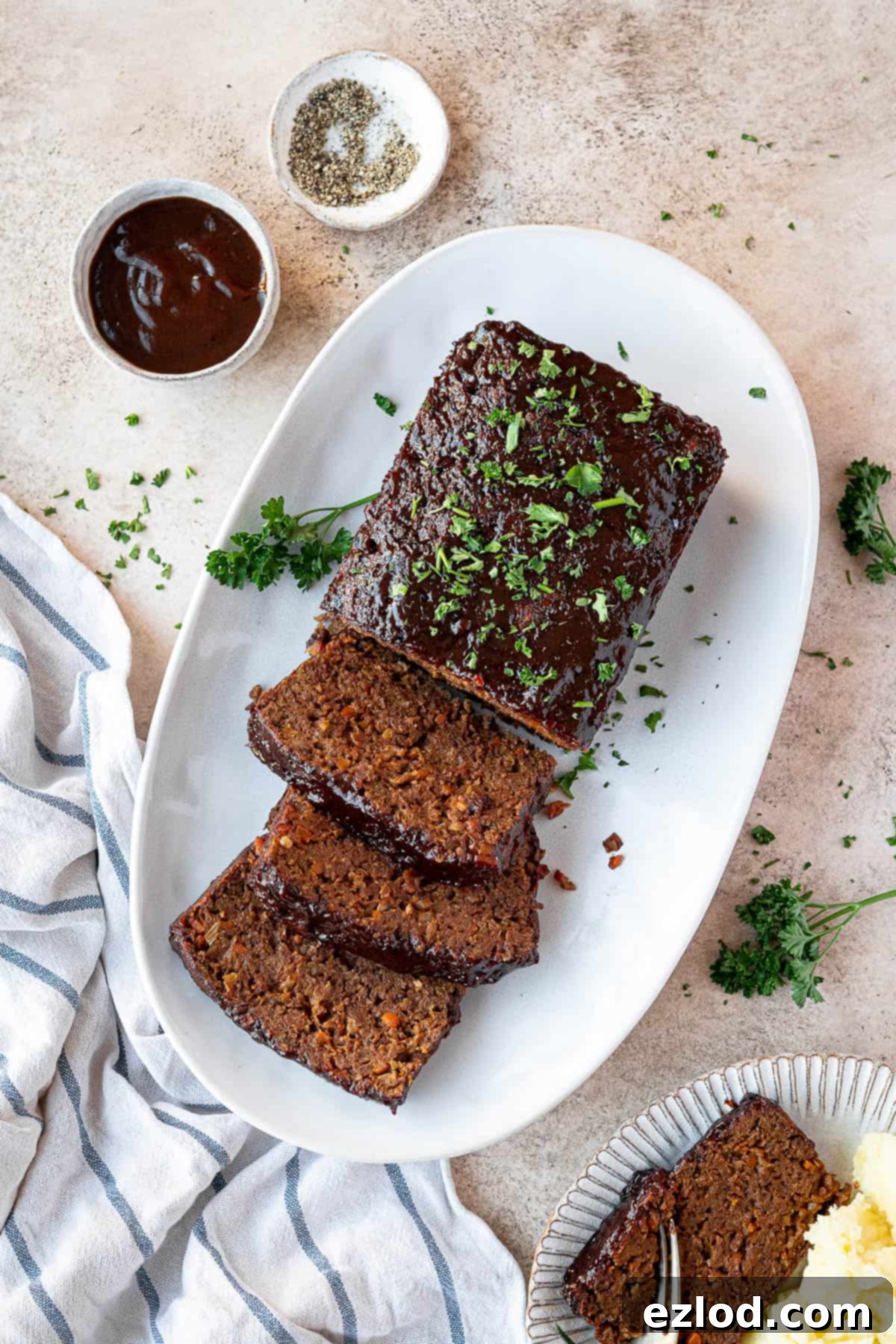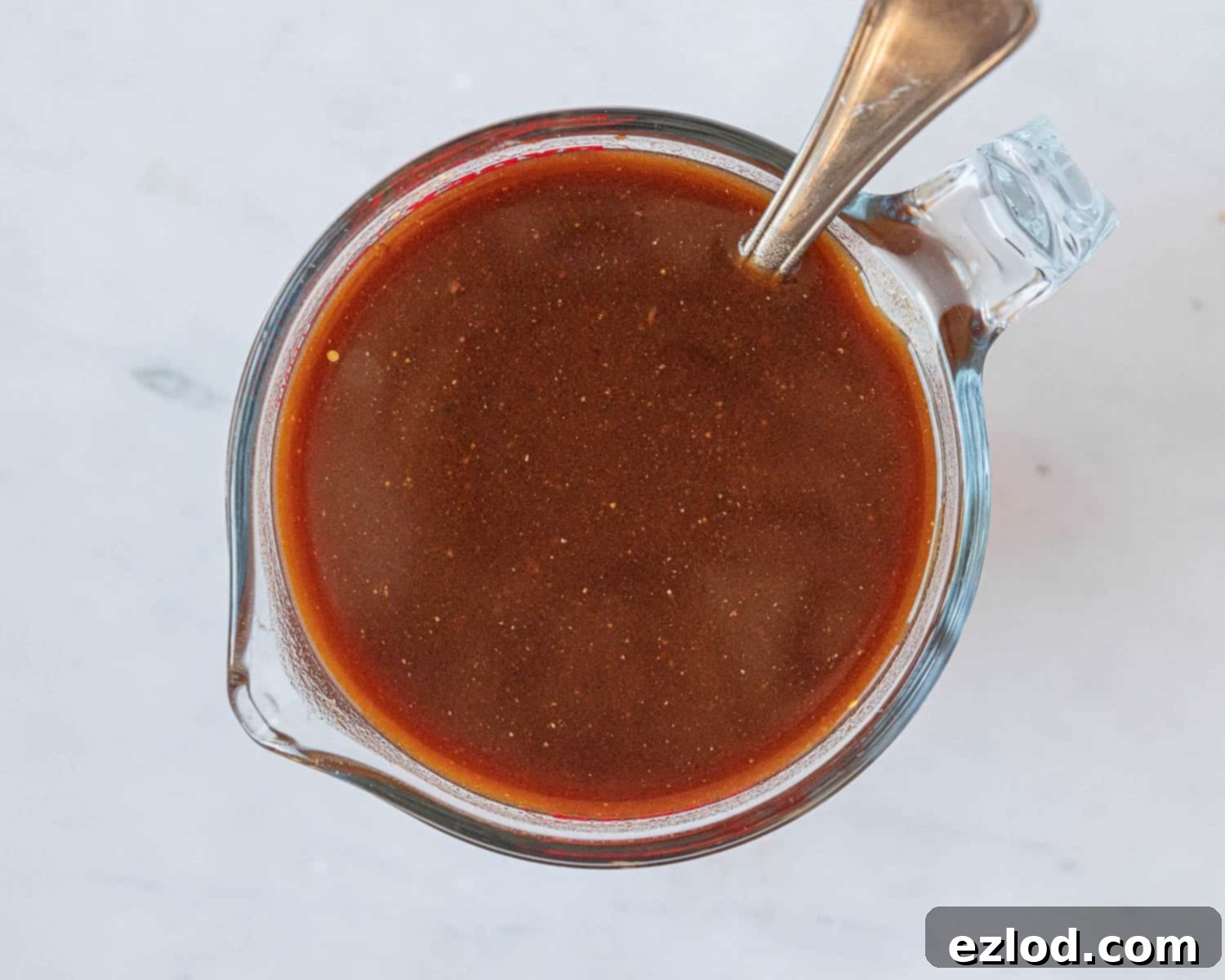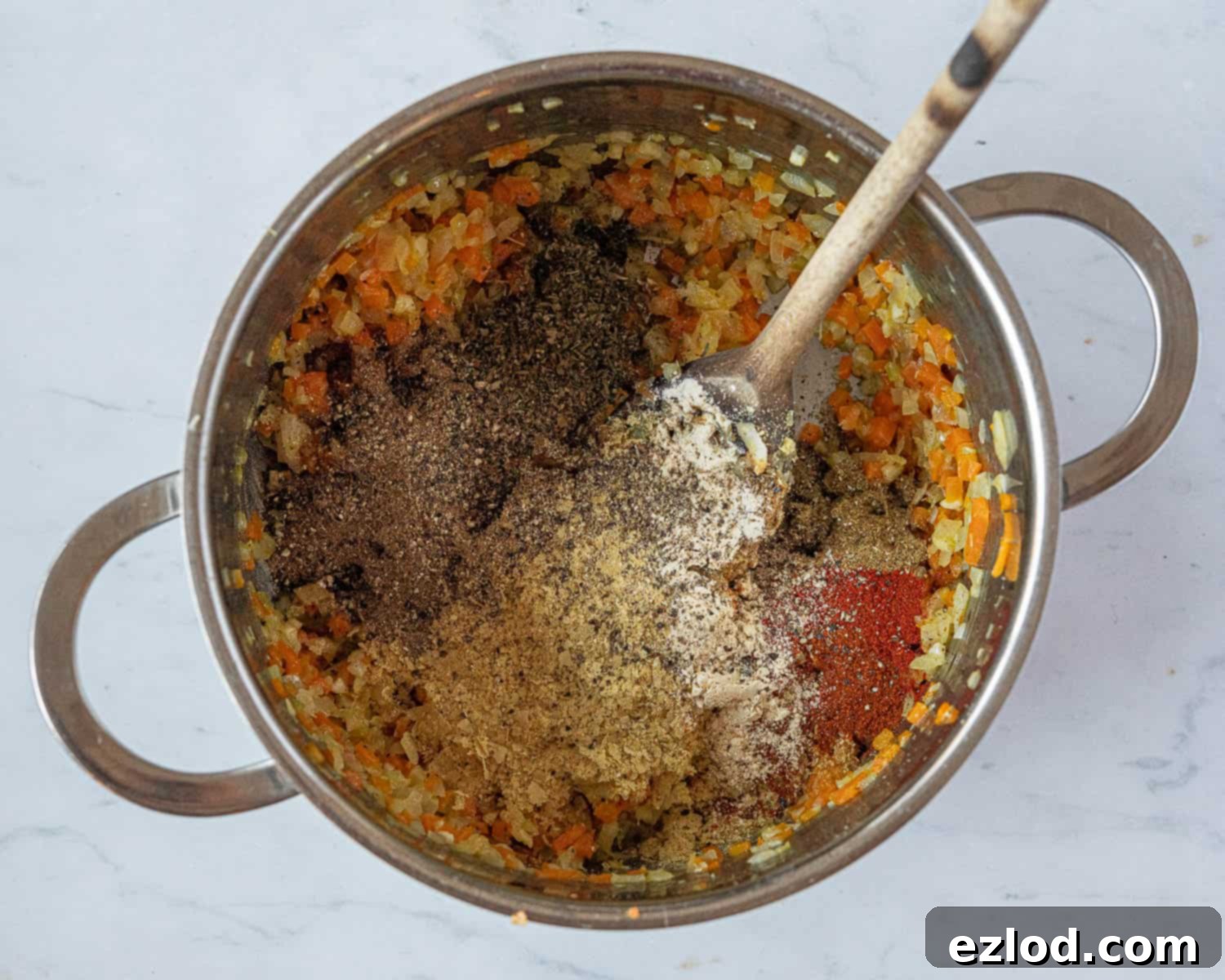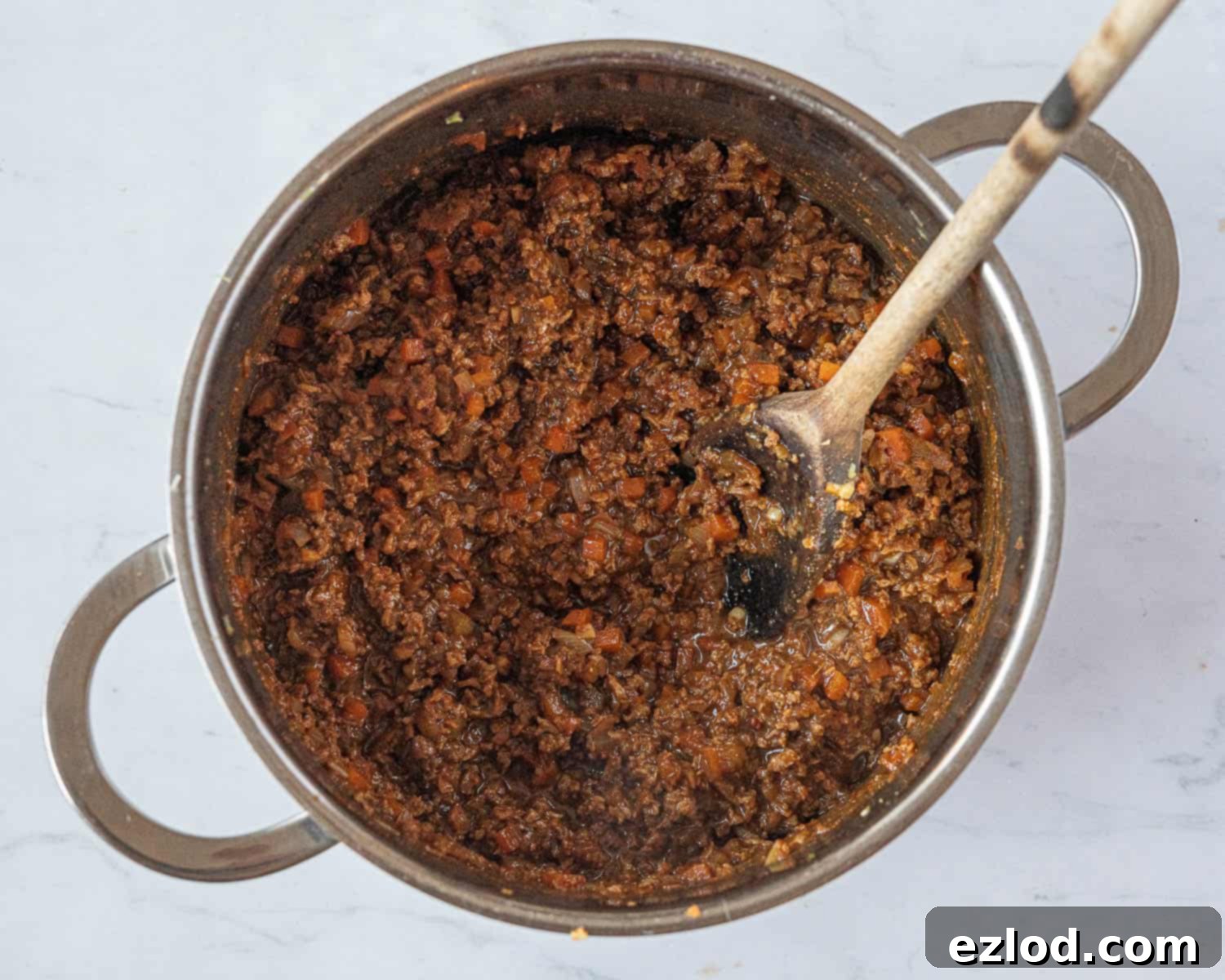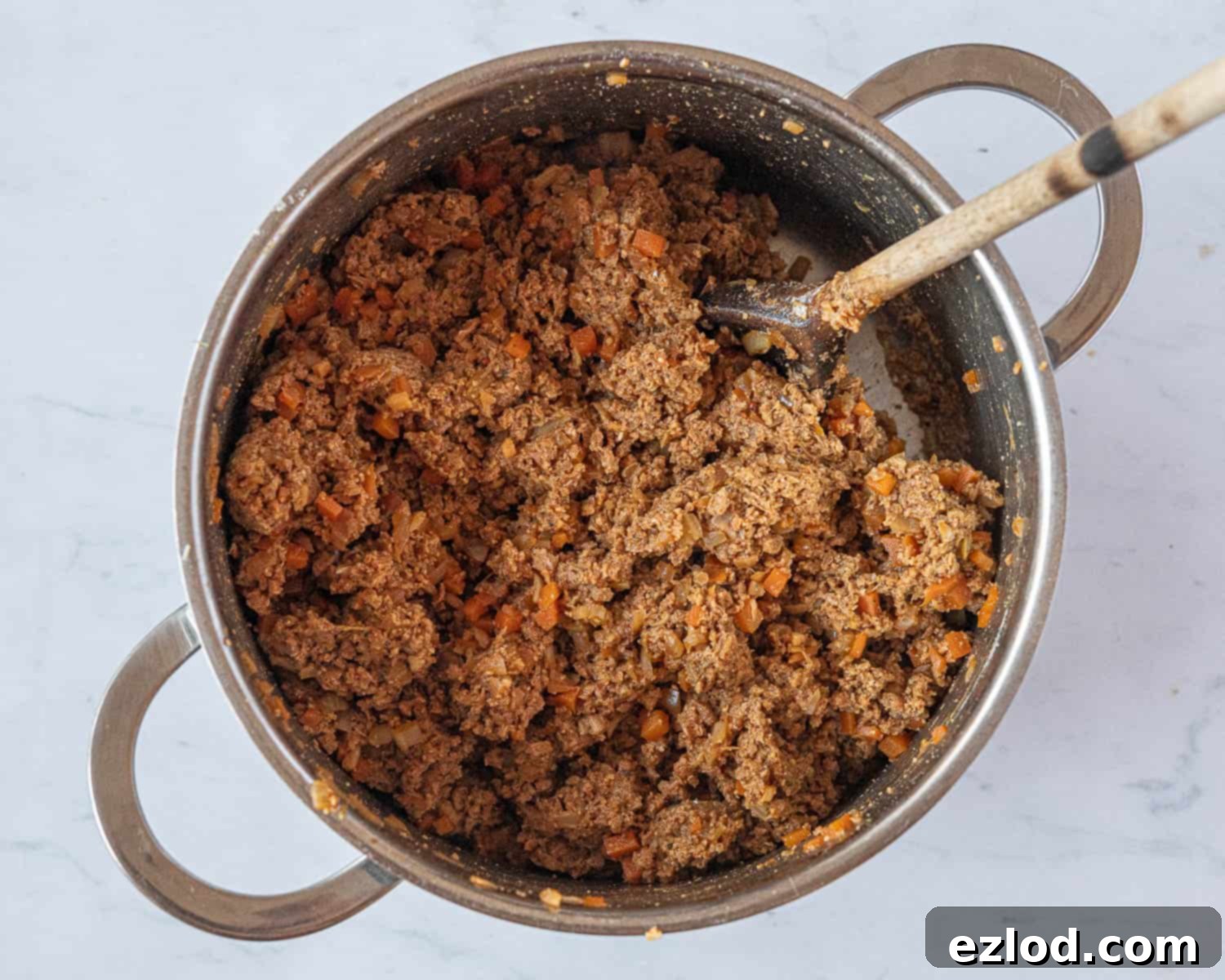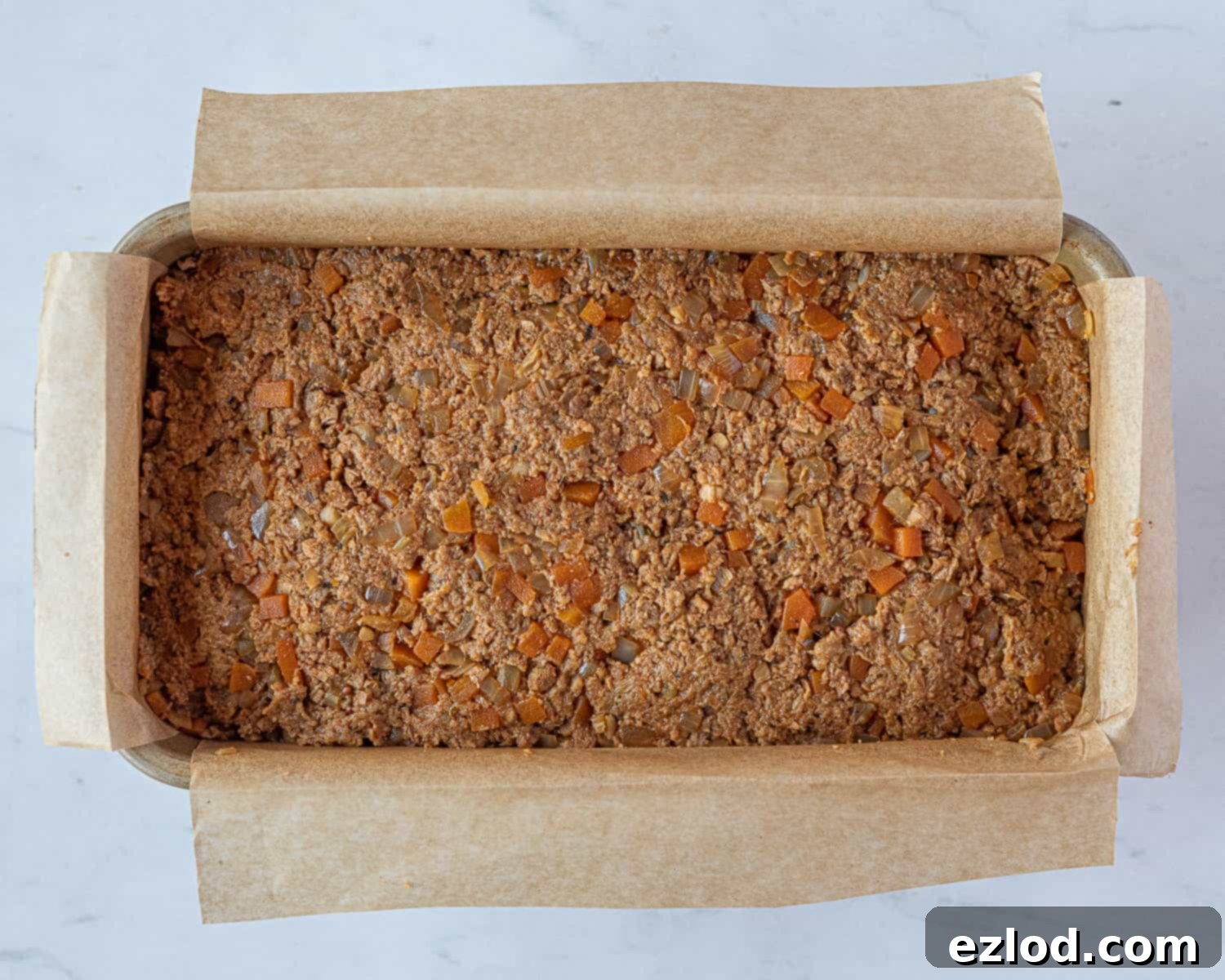The Ultimate Vegan Seitan Meatloaf Recipe: Hearty, Flavorful, and Unmistakably Meaty
Welcome to the world of truly satisfying plant-based comfort food! This vegan seitan meatloaf is a culinary revelation, delivering a hearty, savory experience packed with deep flavor and an incredibly meat-like texture. Forget the days of mushy or crumbly vegan loaves; this recipe promises a moist yet firm meatloaf that slices beautifully and holds its shape, just like the classic.
Perfect for a comforting Sunday roast alongside fluffy mashed potatoes, vibrant steamed vegetables, and rich vegan gravy, it’s also a fantastic centerpiece for any festive meal. And the best part? Leftovers are an absolute delight, transforming into gourmet sandwiches or quick, satisfying lunches. Prepare to be amazed by how closely this plant-based marvel mimics its traditional counterpart.
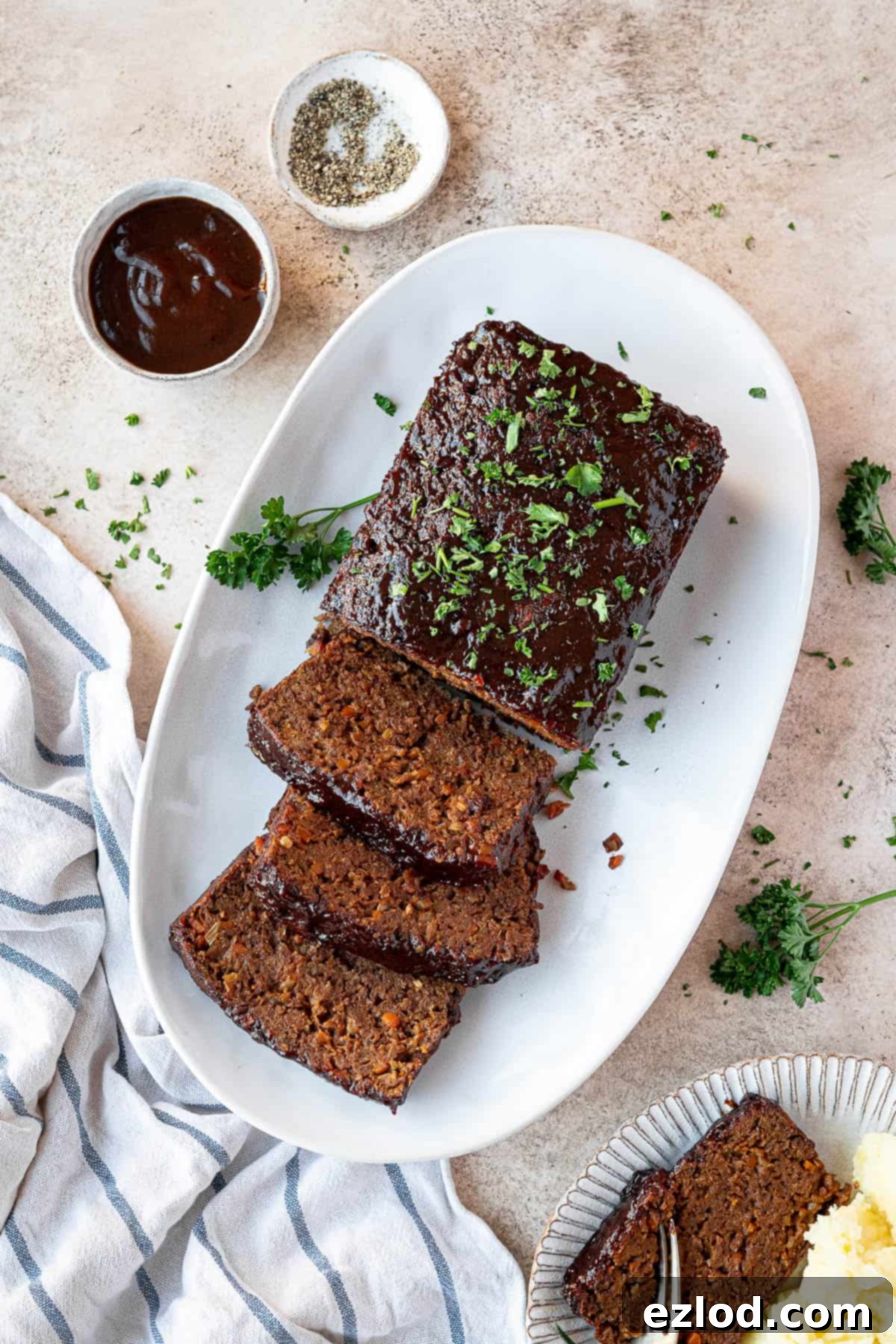
Why This Vegan Seitan Meatloaf Stands Out
While classic vegan lentil or bean-based meatloaves are undeniably delicious and have their place, they often fall short when it comes to replicating the distinct texture and mouthfeel of a traditional meatloaf. They can sometimes be too soft, or lack the fibrous chew that many associate with this comforting dish.
This particular vegan seitan meatloaf recipe bridges that gap remarkably well. It achieves a truly meaty texture and flavor profile that will impress even the most discerning palate. The loaf is wonderfully moist without being mushy, boasting a distinct crumbly, mince-like consistency that surprisingly stays intact when sliced. You won’t have to worry about it falling apart on your plate, making it ideal for elegant presentation and easy serving.
Imagine serving this alongside creamy mashed potatoes, perfectly steamed green beans, and a generous pour of rich, savory gravy. It’s a retro-inspired, deeply comforting meal that evokes nostalgia while being entirely plant-based.
What Exactly Is Seitan? The Secret to a Meaty Vegan Texture
Seitan is the star ingredient that makes this vegan meatloaf truly exceptional. Often referred to as “wheat meat,” seitan is primarily made from vital wheat gluten, which is the chief protein found in wheat. Don’t confuse it with bread, though; while vital wheat gluten gives bread its characteristic chewiness, seitan is a completely different culinary entity.
When prepared correctly, vital wheat gluten transforms into a dense, chewy, and incredibly meat-like substance. Its high protein content makes it an outstanding meat substitute for vegans and vegetarians looking for a satisfying protein source. In fact, wheat gluten has been enjoyed as a meat alternative for centuries in various Asian cuisines, particularly in China and Japan, proving its long-standing culinary versatility.
In this recipe, vital wheat gluten is ingeniously combined with TVP (Textured Vegetable Protein) or soy protein mince. This powerful duo works in synergy to create a meaty flavor and texture that is remarkably close to traditional ground meat. The seitan provides the essential chew and structure, while the rehydrated TVP contributes to that familiar crumbly, mince-like consistency, resulting in a vegan meatloaf that’s hearty, satisfying, and incredibly authentic.
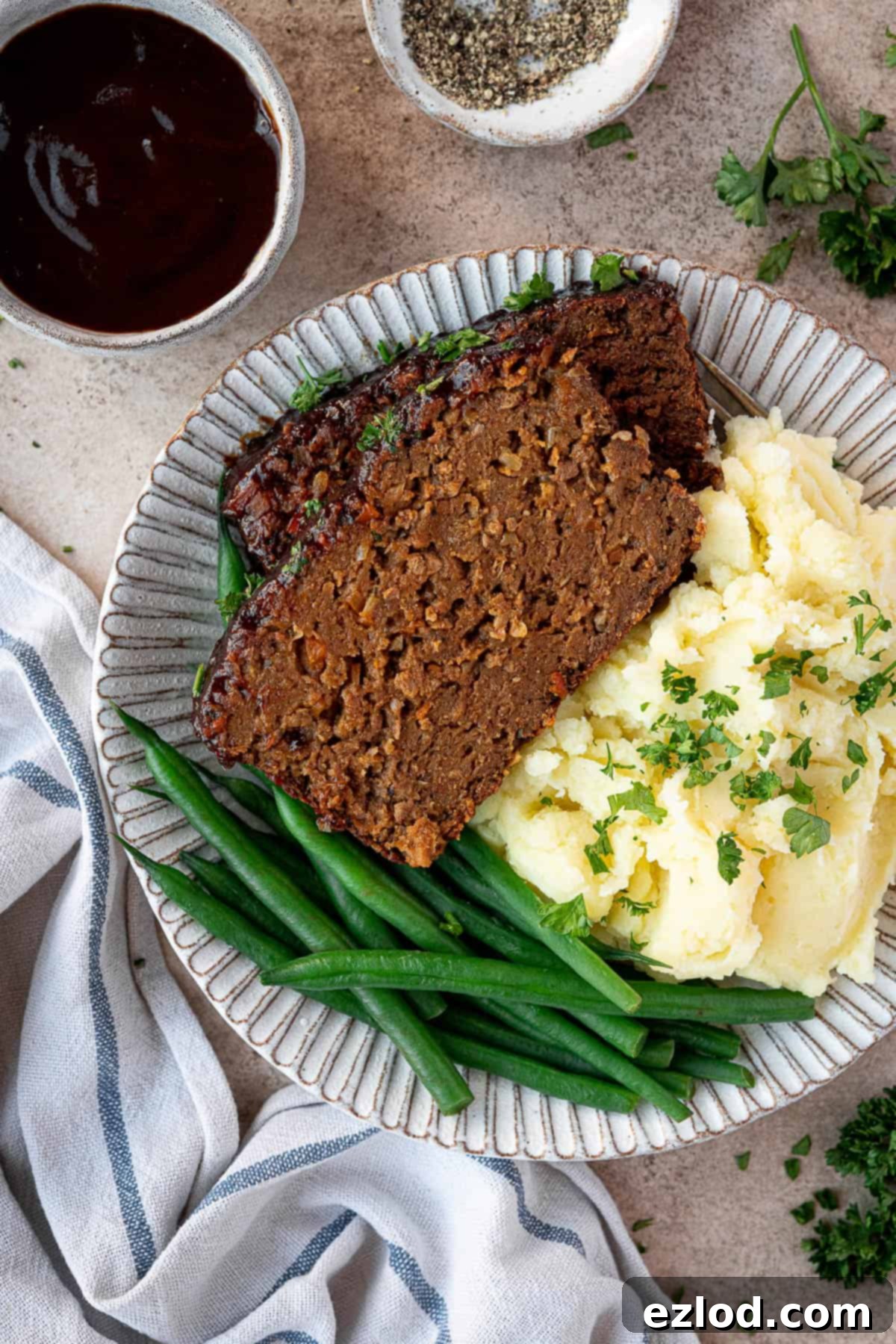
Essential Ingredients for Your Vegan Seitan Meatloaf
While the ingredient list for this vegan seitan meatloaf may seem a little long at first glance, don’t let that deter you! Each component plays a crucial role in building the complex flavors and satisfying texture, and the recipe itself is quite straightforward to execute. The incredible end result is absolutely worth the effort!
The Core Texture Builders:
- Vital Wheat Gluten: This is the absolute cornerstone of this recipe and cannot be substituted. It is the isolated protein from wheat flour and, when dry, it looks much like regular flour. However, once mixed with liquid and cooked, it develops its characteristic chewy, fibrous, and very “meaty” texture. It’s readily available online and in many health food stores.
- TVP (Textured Vegetable Protein): Also known as dried soy protein mince, TVP is essential for creating the crumbly, ground-meat texture. A meatloaf made solely from seitan would be too dense and slab-like. TVP, made from soy, is sold dry and *must* be rehydrated before use. Do not attempt to substitute it with wet, ready-to-cook vegan minces, as they will alter the moisture balance and final texture significantly. This ingredient is crucial and cannot be swapped out.
- Breadcrumbs: Dry breadcrumbs work hand-in-hand with the TVP to further enhance that desirable mince-like texture. Ensure you use dry breadcrumbs, not fresh ones, as their absorption properties are different.
Flavor Enhancers & Umami Boosters:
- Vegan Worcestershire Sauce: Traditional Worcestershire sauce contains anchovies, so it’s vital to choose a certified vegan version. Brands like Henderson’s Relish are excellent vegan-friendly alternatives. You can also find recipes to make your own at home.
- Miso Paste: This fermented soybean paste is a powerhouse of savory umami flavor, adding incredible depth to the meatloaf. If you don’t have miso paste, 1 teaspoon of MSG can be used as a substitute for that pure umami kick.
- Soy Sauce: Contributes both rich umami notes and essential saltiness, rounding out the flavor profile.
- Stock: Using a good quality, meat-free “beef” flavored stock (such as OXO meat-free beef stock) is key to infusing a convincing meaty aroma and taste into the loaf.
- Porcini Mushroom Powder: I highly recommend adding this to your seitan recipes for an intense, earthy, and deep umami flavor. While it can be omitted if unavailable, it significantly elevates the taste. I often purchase mine online.
- Olive Oil: More than just for sautéing the vegetables, incorporating olive oil directly into the mixture is important. It adds a crucial element of fat, preventing the vegan meatloaf from becoming dry and enhancing its rich mouthfeel. Any neutral-flavored oil can be used.
- Barbecue Sauce: While ketchup can be a substitute for the glaze, barbecue sauce provides a more complex and flavorful finish. Always double-check that your chosen brand is vegan-friendly, as some contain non-vegan ingredients. Levi Root’s Reggae Reggae jerk BBQ sauce is a personal favorite.
Fresh Vegetables & Aromatics:
- Finely Chopped Vegetables: A classic mirepoix of finely chopped onion, celery, and carrot forms the aromatic base of this meatloaf, contributing moisture, texture, and a foundational layer of flavor.
- Garlic & Tomato Puree: Fresh crushed garlic and concentrated tomato puree deepen the savory notes and add a touch of tang, essential for a well-rounded flavor.
Herbs & Spices:
- Nutritional Yeast: Adds a cheesy, umami, and savory depth.
- Mustard: A touch of mustard (Dijon or whole grain) adds a subtle tang and heat that complements the other flavors.
- Mixed Dried Herbs: A blend of classic herbs provides an aromatic backbone.
- Cayenne Pepper: For a very subtle hint of warmth and a touch of complexity. Adjust to your spice preference.
- Smoked Paprika: Delivers a wonderful smoky depth that enhances the “meaty” flavor.
- Cumin & Coriander: These spices add an earthy, warm undertone.
- Garlic Powder, Salt, and Pepper: Essential seasonings that tie all the flavors together. Feel free to adjust these to suit your personal taste preferences.
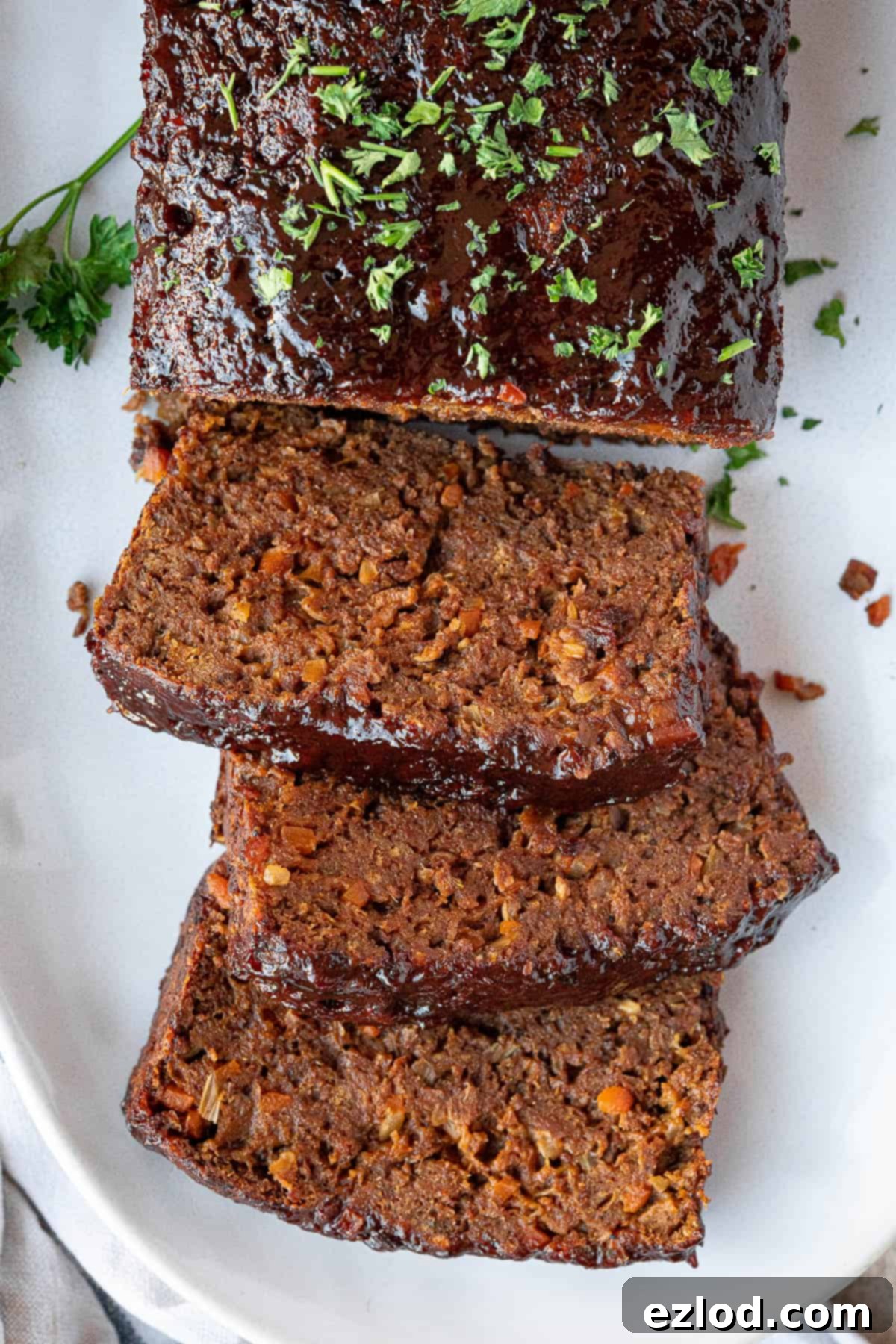
Step-by-Step Guide: How to Make Vegan Seitan Meatloaf
(For precise measurements and detailed instructions, please refer to the comprehensive recipe card located at the bottom of this page.)
Creating this delicious vegan seitan meatloaf is a process that builds layers of flavor and texture. Follow these steps for a perfect result every time:
-
Prepare Your Wet Ingredients: In a large jug or bowl, combine the boiling water, stock cube, tomato puree, soy sauce, vegan Worcestershire sauce, mustard, miso paste, and the initial measure of barbecue sauce. Whisk everything together until well combined and the stock cube is dissolved. This flavorful liquid base will hydrate your TVP and infuse the entire loaf with depth.

-
Sauté the Aromatics: Heat the olive oil in a large pan over a medium-low heat. Add the very finely chopped onion, celery, carrot, and crushed garlic. Sauté these vegetables gently for approximately 10 minutes, or until they are tender and translucent. This step is crucial for developing the foundational sweet and savory flavors of your meatloaf.
-
Infuse with Spices: Once the vegetables are soft, stir in the nutritional yeast, porcini mushroom powder (if using), mixed dried herbs, smoked paprika, cumin, coriander, cayenne pepper, garlic powder, and a generous amount of freshly ground black pepper. Cook for about 30 seconds, stirring constantly, to toast the spices and release their aromatic oils. If you prefer a saltier meatloaf, you can add ¼ teaspoon of salt at this stage; otherwise, omit it as other ingredients contribute sufficient saltiness.

-
Rehydrate the TVP: Pour the prepared wet ingredients mixture into the pan with the sautéed vegetables and spices. Add the dry TVP to the pan. Bring the mixture to a gentle simmer, then immediately remove it from the heat. Cover the pan and let it sit for 20-30 minutes. This allows the TVP to fully rehydrate and absorb all the rich flavors, softening and plumping up to mimic ground mince.

-
Combine Dry Ingredients: While the TVP rehydrates, preheat your oven to 180°C/160°C fan/350°F/gas mark 4. Line a 2 lb (approximately 900g capacity) loaf tin with baking parchment, leaving an overhang on the long sides to easily lift the meatloaf out later.
-
Form the Loaf Mixture: Once the TVP mixture has rehydrated, stir in the dry breadcrumbs and the vital wheat gluten. Mix thoroughly until no dry patches of gluten or breadcrumbs remain and everything is well combined. Crucially, do NOT knead the mixture. Over-mixing or kneading the vital wheat gluten will develop too much elasticity, resulting in a tough, rubbery meatloaf rather than a tender, crumbly one.

-
Prepare for Baking: Transfer the meatloaf mixture into the prepared loaf tin. Press the mixture down firmly and evenly to eliminate any air pockets and ensure a consistent texture throughout the loaf. This helps it hold its shape during baking.

-
Bake to Perfection: Cover the loaf tin tightly with tin foil. Bake for 1 hour. After an hour, carefully remove the tin foil. Evenly spread a layer of the remaining barbecue sauce over the top of the meatloaf. Return it to the oven, uncovered, and bake for an additional 10-15 minutes, or until the glaze is slightly caramelized and sticky. This final uncovered baking step creates a beautiful, flavorful crust.
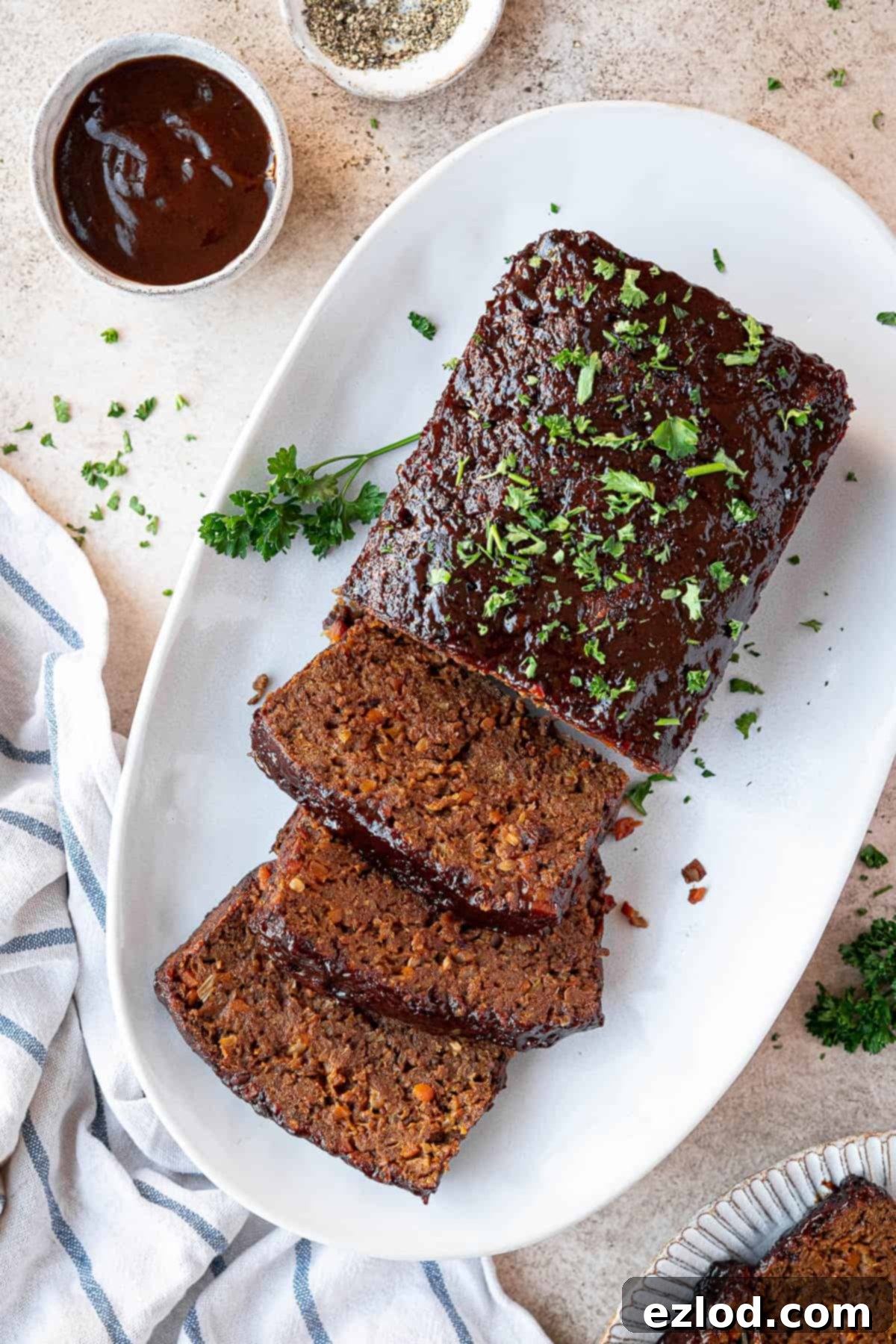
Expert Tips for Seitan Meatloaf Success
To ensure your vegan seitan meatloaf turns out perfectly every time, keep these valuable tips in mind:
- Weigh Your Ingredients: I cannot stress this enough – for consistent and optimal results, always use a digital kitchen scale to weigh your ingredients, especially the vital wheat gluten, TVP, and breadcrumbs. Cup measurements can be highly inaccurate due to variations in how ingredients are packed, leading to a meatloaf that is either too wet and soft or too dry and crumbly. Precision is key in seitan making!
- Do Not Knead: Once you add the vital wheat gluten, mix the dough just until all dry patches are incorporated. Avoid kneading the mixture. Kneading develops the gluten too much, which will result in a tough, rubbery, and overly bouncy meatloaf instead of the desired tender, crumbly, and meaty texture.
- Finely Chop Vegetables: Ensure your onion, celery, and carrot are very finely diced. This helps them cook down evenly, integrate seamlessly into the loaf, and contribute moisture without creating large, chunky pieces.
- Rest Before Slicing: Allow the meatloaf to rest for at least 10-15 minutes after removing it from the oven. This helps it set further, making it easier to slice cleanly without crumbling.
- Storage and Leftovers: The cooked vegan meatloaf will keep wonderfully in an airtight container in the fridge for up to 4 days. It reheats beautifully in slices in the microwave or oven.
- Freezing Instructions: While I haven’t tested freezing the entire meatloaf whole, individual slices freeze exceptionally well. Wrap slices tightly in plastic wrap and then foil, or place them in freezer-safe bags. Thaw in the refrigerator overnight and reheat as desired. This is perfect for meal prepping!
- Leftover Sandwich Sensation: Don’t underestimate the power of thinly sliced cold meatloaf in sandwiches! Layer it with your favorite vegan cheese, lettuce, tomato, and a dollop of relish or mustard for an epic lunch.
Frequently Asked Questions
Can I make this recipe gluten-free?
Unfortunately, no. The vital wheat gluten is the foundational and essential ingredient for creating seitan and its unique meat-like texture. It cannot be substituted with gluten-free flours or binders, as they do not possess the same protein structure required for seitan. Therefore, this specific recipe is inherently not gluten-free.
Can I prepare this meatloaf ahead of time?
Yes, you can! You can prepare the mixture (up to the point of adding breadcrumbs and vital wheat gluten) and store it in the fridge overnight. When ready to bake, mix in the remaining dry ingredients, press into the loaf tin, and bake as directed. Alternatively, you can bake the entire meatloaf, let it cool completely, and then store it in the fridge for up to 4 days before reheating.
What if I don’t have porcini mushroom powder?
If you can’t find porcini mushroom powder, you can simply omit it. The meatloaf will still be incredibly flavorful due to the other umami-rich ingredients like miso, soy sauce, and nutritional yeast. However, if you’re looking for an extra layer of deep, earthy flavor, it’s a worthwhile addition.
What are some other serving suggestions for this vegan seitan meatloaf?
Beyond the classic roast dinner, this versatile meatloaf pairs well with so much! Consider serving it with roasted sweet potatoes and asparagus, a side of creamy polenta, or even sliced thinly over a hearty salad. It can also be diced and added to a rich gravy for a vegan “shepherd’s pie” topping. For a holiday spread, it’s a fantastic alternative to a traditional roast.
More Delicious Vegan Comfort Food Recipes:
- Vegan Swedish Meatballs
- Vegan Lentil Walnut Bolognese
- Creamy Vegetable Rice Soup
- Creamy Vegetable Chickpea Soup
- Vegan Mushroom Risotto with Truffle Oil
- Chickpea, Leek and Mushroom Pie
- Vegan Chicken Potato Pie
- Creamy Vegan Mushroom Pasta with Truffle Oil
- Vegan Cottage Pie

Print
Vegan Seitan Meatloaf
Ingredients
Liquid Ingredients:
- 1 stock cube (OXO no meat beef)
- 3 Tablespoons soy sauce
- 1 Tablespoon tomato puree (paste)
- 1 Tablespoon vegan worcestershire sauce
- 1 Tablespoon miso paste
- 1 teaspoon mustard
- 60 g (¼ cup) barbecue sauce
- 450 g/ml (scant 2 cups) boiling water
Vegetables:
- 3 Tablespoons olive oil
- 1 small onion very finely chopped
- 1 large celery stick very finely chopped
- 1 large carrot very finely chopped
- 4 cloves garlic peeled and crushed
Herbs And Spices:
- 4 Tablespoons nutritional yeast
- 1 Tablespoon porcini mushroom powder
- 2 teaspoons mixed dried herbs
- 1 ½ teaspoons smoked paprika
- 1 teaspoon cumin
- 1 teaspoon coriander
- ½ teaspoon cayenne pepper
- ½ teaspoon garlic powder
- black pepper
- ¼ teaspoon salt (optional)
Dry Ingredients:
- 75 g (1 cup) TVP/dry soy protein mince
- 140 g (1 ¼ cups) dry breadcrumbs
- 180 g (1 ½ cups) vital wheat gluten
To Finish:
- 80 g (⅓ cup) barbecue sauce
Instructions
-
Mix together the stock cube, soy sauce, tomato puree, worcestershire sauce, miso paste, mustard, barbecue sauce and boiling water in a large jug.
-
Heat the olive oil in a large pan and cook the onion, celery, carrot and garlic over a gentle heat for about 10 minutes until soft.
-
Add the nutritional yeast, mushroom powder, mixed herbs, smoked paprika, cumin, coriander, cayenne, garlic powder and plenty of black pepper. Add the ¼ teaspoon of salt only if you prefer a saltier meatloaf. Omit it if you are sensitive to salt. Cook for about 30 seconds while stirring
-
Add the wet ingredients and the TVP to the pan. Bring up to a simmer then remove from the heat and set aside for 20-30 minutes for the TVP to rehydrate.
-
Meanwhile, preheat the oven to 180°C/160°C fan/350°F/gas mark 4. Line a 2 lb loaf tin with baking parchment.
-
Stir the breadcrumbs and vital wheat gluten into the TVP mixture. Mix until no dry patches remain but do not knead the mixture.
-
Tip into the lined loaf tin and pack the mixture down evenly.
-
Cover with tin foil and bake for 1 hour. Remove the tin foil, spread a layer of barbecue sauce over the top of the meatloaf and bake for 10-15 minutes more.
Notes
- See post above for tips, details and step-by-step photos.
- I highly, highly recommend weighing out the ingredients using a digital scale rather than using the cup conversions. You will get a far better, more consistent result. Cups are a very innaccurate measuring system and you may end up with meatloaf that is either too wet or too dry.
- Recipe inspired by Crafting Seitan by Skye Michael Conroy
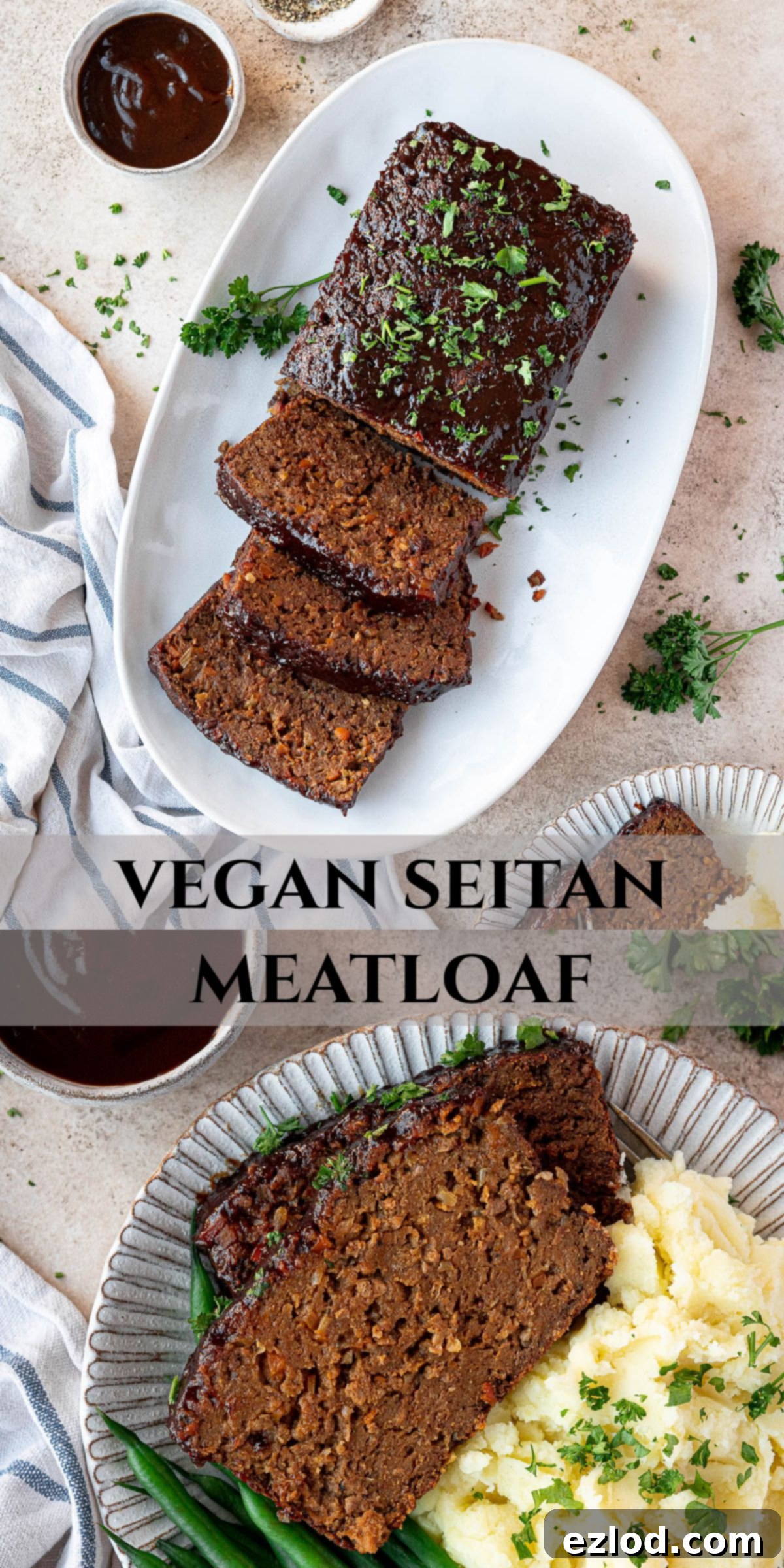
If you’ve tried this incredible vegan seitan meatloaf recipe, I would love to hear your thoughts! Please rate it, leave a comment below, or share your creation on Instagram and tag @domestic_gothess using the hashtag #domesticgothess. Your feedback helps others discover and enjoy this fantastic recipe!
All images and content on Domestic Gothess are copyright protected. If you wish to share this recipe, please do so by utilizing the provided share buttons. To respect copyright, do not screenshot or post the full recipe or content directly. Instead, kindly include a link back to this original post for the recipe.
